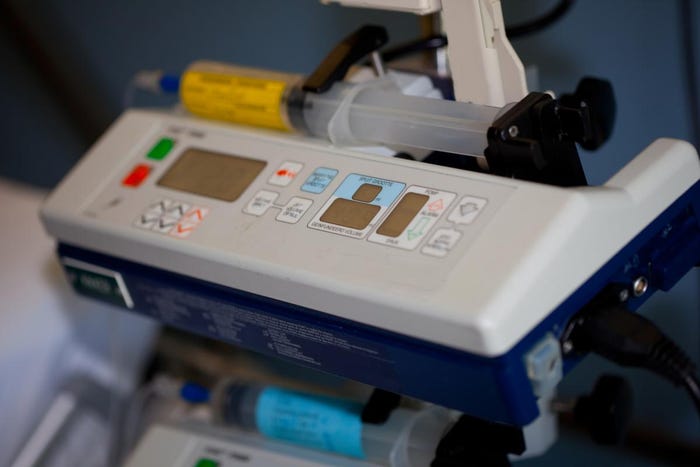PC/PET targets medical housings, offers chemical resistance
Increased emphasis on hospital acquired infections (HAIs) have led medical professionals to enhance their standard operating procedures for infection control, putting housing materials, including plastics, under greater duress.
August 17, 2011
Increased emphasis on hospital acquired infections (HAIs) have led medical professionals to enhance their standard operating procedures for infection control, putting housing materials, including plastics, under greater duress. In response, a new polycarbonate/polyethylene terephthalate (PC/PET) blend specifically designed for medical equipment housing applications has been launched that reportedly offers superior chemical resistance.
Styron Emerge PC/PET 9100CR
Styron's Emerge PC/PET 9100CR is the first in a series of grades that are said to offer greater resistance to chemicals used in the disinfecting process. These chemicals are increasingly harsh and can degrade plastic surfaces, leading to crazing, cracking, and, in some cases, product failure.
Emerge PC/PET 9100CR is available in natural and custom color options for opaque housings. It joins Emerge PC/ABS 7600, a biocompatible, non-chlorinated, non-brominated, ignition-resistant blend that was introduced earlier this year and combines the physical properties of PC with the processability, toughness, and flow of ABS.
Beyond housing materials, Styron (Berwyn, PA) provides resins for single- and multiple-use medical devices under its Calibre brand of PC resins, with Calibre Megarad using color-compensation technology to ensure color stability following gamma- and electron-beam radiation. Styron, which supplies plastics, rubbers, and latex announced plans to change its company name to Trinseo, effective in late 2011.
HAI's a leading cause of death in the U.S.
Hospital acquired or nosocomial infections, when they result in bloodstream infections, could be considered a leading cause of death in the U.S., according to the Center for Disease Control (CDC). In a recent study, the CDC noted that if a nosocomial infection rate of 5% is assumed, of which 10% are bloodstream infections (which have a mortality rate of 15%), those bloodstream infections would represent the eighth leading cause of death in the U.S. The CDC said that since most risk factors for dying after bacteremia or fungemia may not be changeable, prevention efforts must focus on "new infection-control technology and techniques."
Extrapolating out the infection statistics, the CDC posited that if 35 million patients are admitted each year to the approximately 7000 acute-care institutions in the U.S., the number of nosocomial infections, assuming overall attack rates of 2.5%, 5%, or 10%, would be 875,000, 1.75 million, and 3.5 million, respectively. Taking it further, if 10% of all hospital-acquired infections involve the bloodstream, 87,500, 175,000, or 350,000 patients acquire these life-threatening infections each year.
About the Author(s)
You May Also Like


